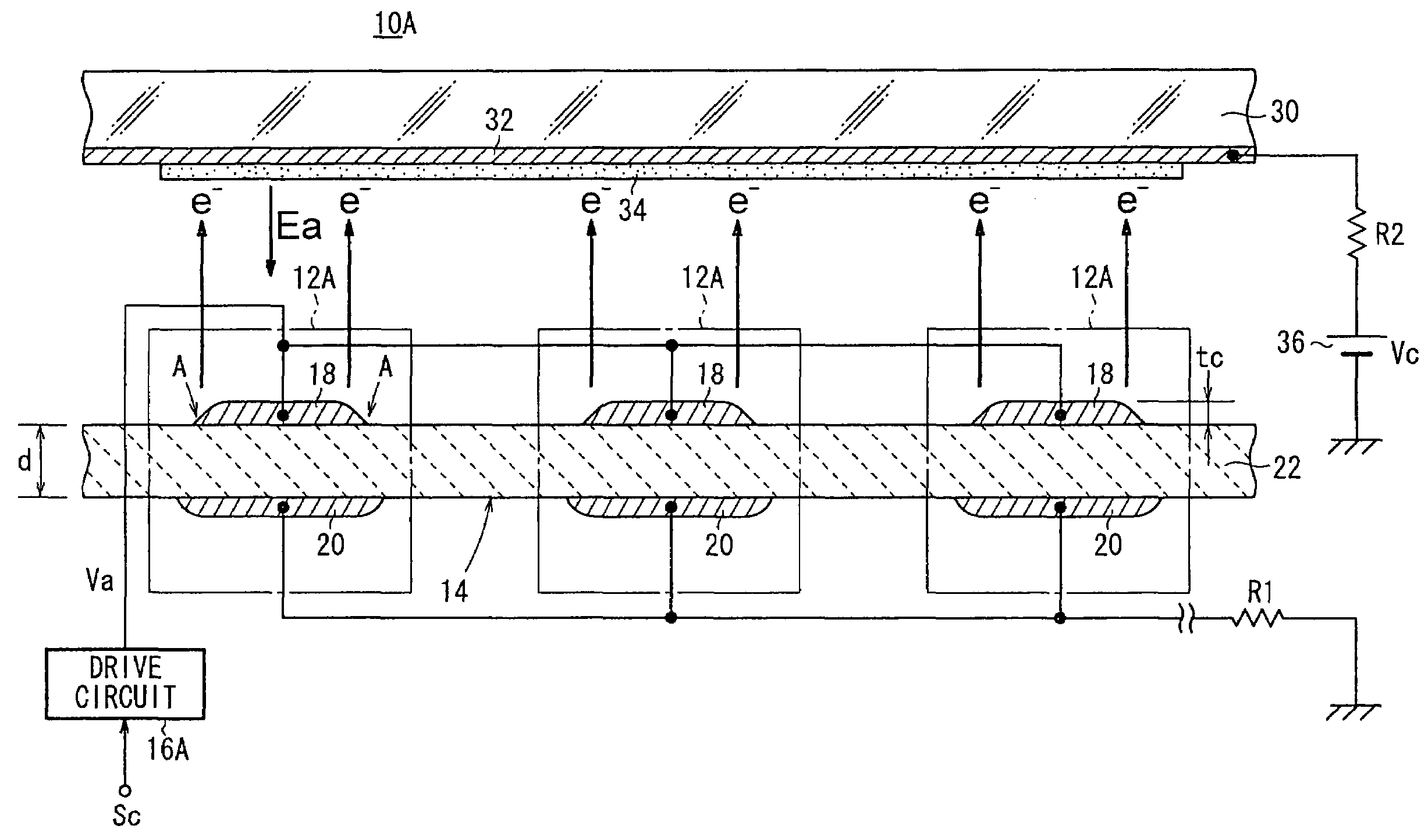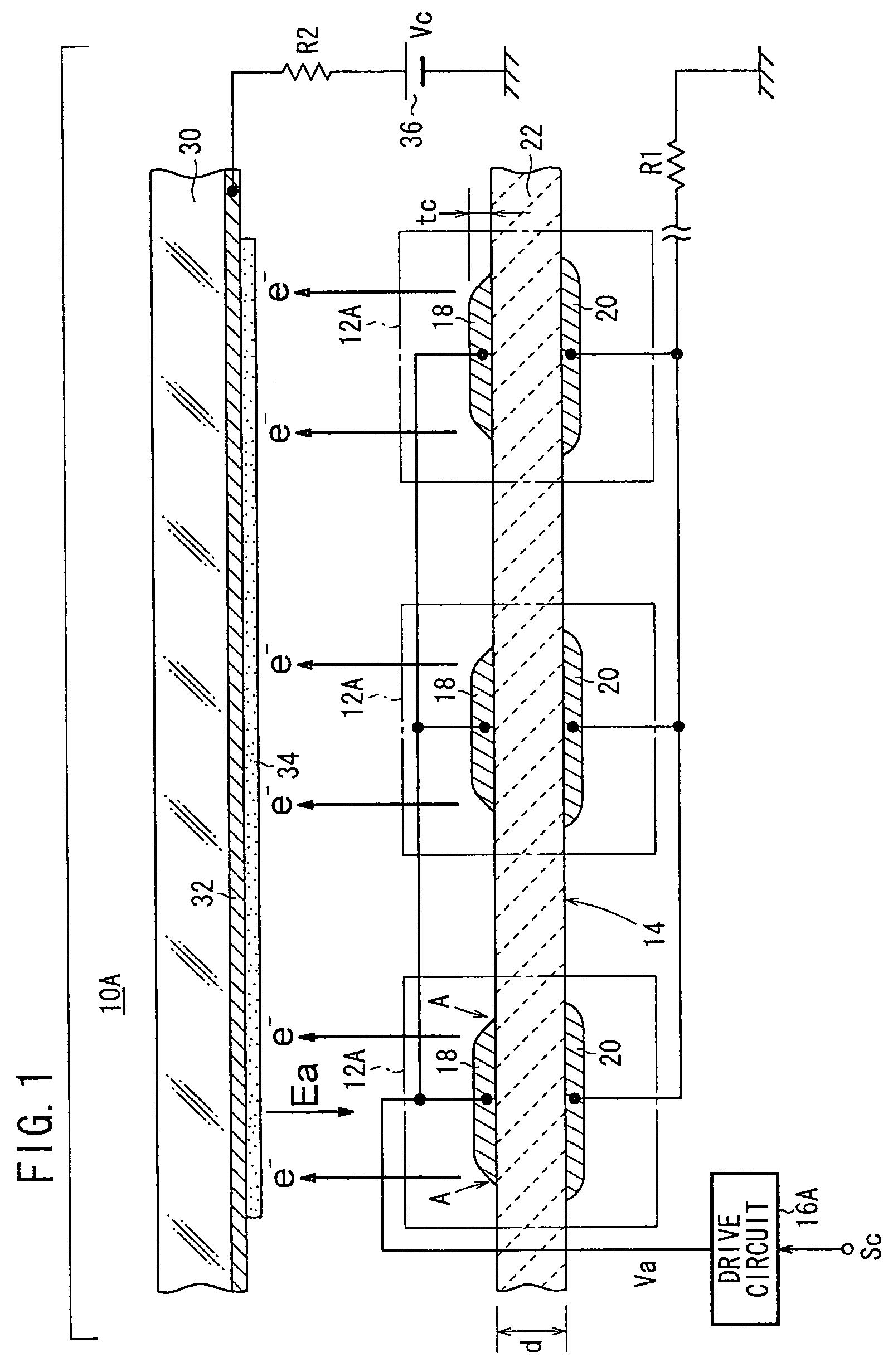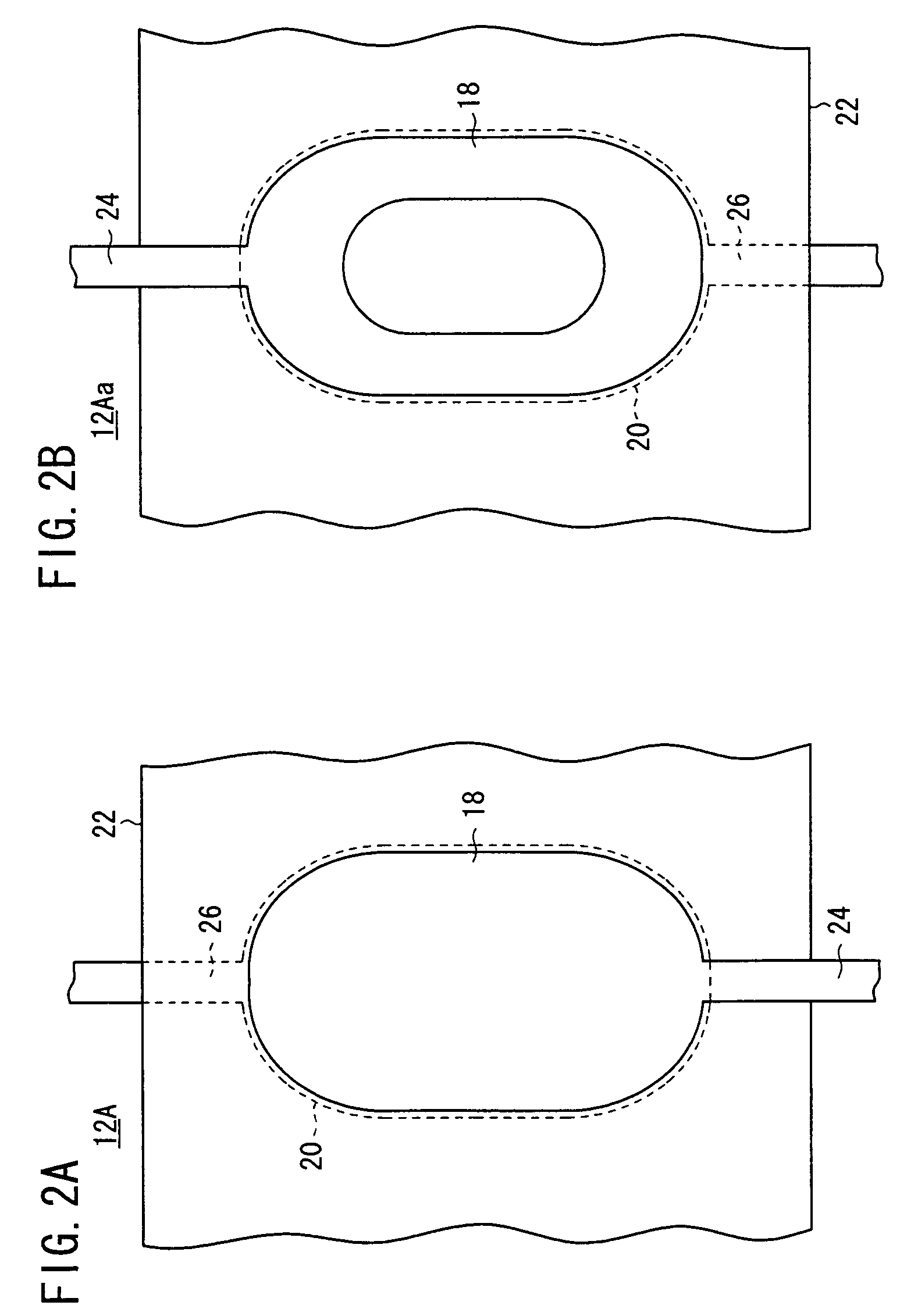Light source
a technology for light sources and discharge tubes, applied in the field of light sources, can solve the problems of high panel fabrication costs, unstable electron emission, and inability to use electron emitters, and achieve the effect of increasing reliability and long service li
- Summary
- Abstract
- Description
- Claims
- Application Information
AI Technical Summary
Benefits of technology
Problems solved by technology
Method used
Image
Examples
first embodiment
[0153]As shown in FIG. 1, a light source 10A according to the present invention has a light emitting section 14A comprising a two-dimensional array of electron emitters 12A, and a drive circuit 16A for applying a drive voltage Va to each of the electron emitters 12A of the light emitting section 14A.
[0154]The drive circuit 16A applies a drive voltage Va between a first electrode (e.g., an upper electrode) 18 and a second electrode (e.g., a lower electrode) 20 of each of the electron emitters 12A to control each of the electron emitters 12A based on a control signal Sc representative of turn-on / turn-off from an external source (a turn-on / turn-off switch or the like). Preferred examples of the drive circuit 16A will be described later on.
[0155]As shown in FIG. 1, each of the electron emitters 12A has a plate-like emitter 22, the upper electrode 18 disposed on a face side of the emitter 22, and the lower electrode 20 disposed on a reverse side of the emitter 22. Since the electron emit...
second embodiment
[0285]As shown in FIG. 38, each of electron emitters 12B of the light source 10B comprises an emitter 22, an upper electrode 18, a lower electrode 20, and a pulse generating source 100 for applying a drive voltage Va between the upper electrode 18 and the lower electrode 20.
[0286]The upper electrode 18 has a plurality of through regions 102 where the emitter 22 is exposed. The emitter 22 has surface irregularities 104 due to the grain boundary of a dielectric material that the emitter 22 is made of. The through regions 102 of the upper electrode 18 are formed in areas corresponding to concavities 106 due to the grain boundary of the dielectric material. In the embodiment shown in FIG. 38, one through region 102 is formed in association with one concavity 106. However, one through region 102 may be formed in association with a plurality of concavities 106. The particle diameter of the dielectric material of the emitter 22 should preferably be in the range from 0.1 μm to 10 μm, and m...
third embodiment
[0454]A preferred structure fabricated as a planar light source, i.e., a light source 10C will be described below with reference to FIGS. 78 through 81.
[0455]As shown in FIG. 78, the light source 10C according to the third embodiment has a rear glass substrate 200 and a front glass substrate 202 having a plate surface disposed in facing relation to a principal surface of the rear glass substrate 200. The plate surface of the front glass substrate 202 is coated with a white phosphor (not shown). A two-dimensional array of electron emitters 12B as shown in FIG. 38, for example, is disposed on the principal surface of the rear glass substrate 200. A vacuum is developed between the rear glass substrate 200 and the front glass substrate 202.
[0456]As shown in FIG. 79, the electron emitters 12B may comprise a two-dimensional array of rectangular electron emission units 204 (described later).
[0457]As shown in FIG. 80, each of the electron emission units 204 comprises a single ferroelectric...
PUM
 Login to View More
Login to View More Abstract
Description
Claims
Application Information
 Login to View More
Login to View More - R&D
- Intellectual Property
- Life Sciences
- Materials
- Tech Scout
- Unparalleled Data Quality
- Higher Quality Content
- 60% Fewer Hallucinations
Browse by: Latest US Patents, China's latest patents, Technical Efficacy Thesaurus, Application Domain, Technology Topic, Popular Technical Reports.
© 2025 PatSnap. All rights reserved.Legal|Privacy policy|Modern Slavery Act Transparency Statement|Sitemap|About US| Contact US: help@patsnap.com



